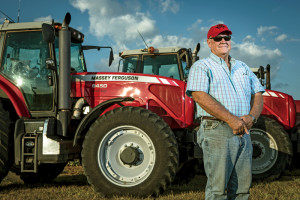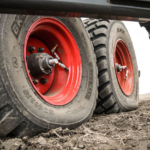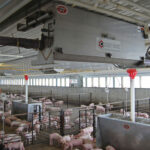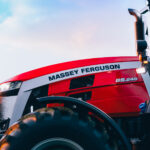Tale of the Tape
Stretching from South Dakota down to Texas, the Ogallala Aquifer has helped turn the land it irrigates into some of the world’s most agriculturally productive. Yet many farmers, researchers and others are concerned about recent signs that the aquifer is...
Tale of the Tape
Stretching from South Dakota down to Texas, the Ogallala Aquifer has helped turn the land it irrigates into some of the world’s most agriculturally productive. Yet many farmers, researchers and others are concerned about recent signs that the aquifer is...Stretching from South Dakota down to Texas, the Ogallala Aquifer has helped turn the land it irrigates into some of the world’s most agriculturally productive. Yet many farmers, researchers and others are concerned about recent signs that the aquifer is being depleted.
So what can be done to conserve those reserves? Many approaches, both new and old, are being researched, but one method of particular interest is subsurface drip irrigation (SDI). Whether or not SDI can replace center-pivot irrigation in field crops to improve water conservation and increase yields is a question Ricky James, a Plainview producer and Massey Ferguson customer, set out to answer.

While James reports mixed results, drip has some advantages, such as less evaporation and perhaps more coverage when compared to pivot.
James, whose brother Jerry operates the AGCO dealership James Bros. Implement, farms 2,600 acres. A little more than a decade ago, he decided to give SDI a try on 40 rented acres. Back then, most SDI was put on 80-inch spacings. “But then we hit the 2011 drought, with only 7 inches of rain that year, and those 80-inch centers wrecked us,” he says.
So the producer, who also sits on the Texas State Soil and Water Conservation Board, was left scrambling to add in the tape necessary for 40-inch centers. “Then the cost of that thing ran way up,” he says.
Lockney, Texas, drip installer Dusty Cornelius concedes that cost does intimidate some producers. He estimates $1,700 to $2,200 an acre for installation on 40-inch centers. By way of comparison, a half-mile pivot system generally runs $70,000, or about $218 an acre.
In addition to price, there are some barriers that make drip less effective than pivot systems or other methods. Rolling terrain may present a challenge to establishing equal water pressure, and fields often need to be subdivided, which ups the cost. Rodent damage can be problematic; and, since the soil surface stays dry, SDI can affect seed germination.
Rick Kellison, project manager of the Texas Alliance for Water Conservation (TAWC), did his own comparison between methods with more cost-effective results. Three fields utilized drip. The other three used LEPA center pivots, outfitted with bubbler nozzles, “a sprinkler that delivers water straight to the soil in a narrow band, reducing the propensity for wind drift or evaporation,” Kellison explains.
According to Kellison, the amount of water used in SDI and LEPA was the same. At the trial’s conclusion, the corn yield from SDI was slightly higher, but, Kellison says, it was only “a half-bushel of a … difference in yield.”



